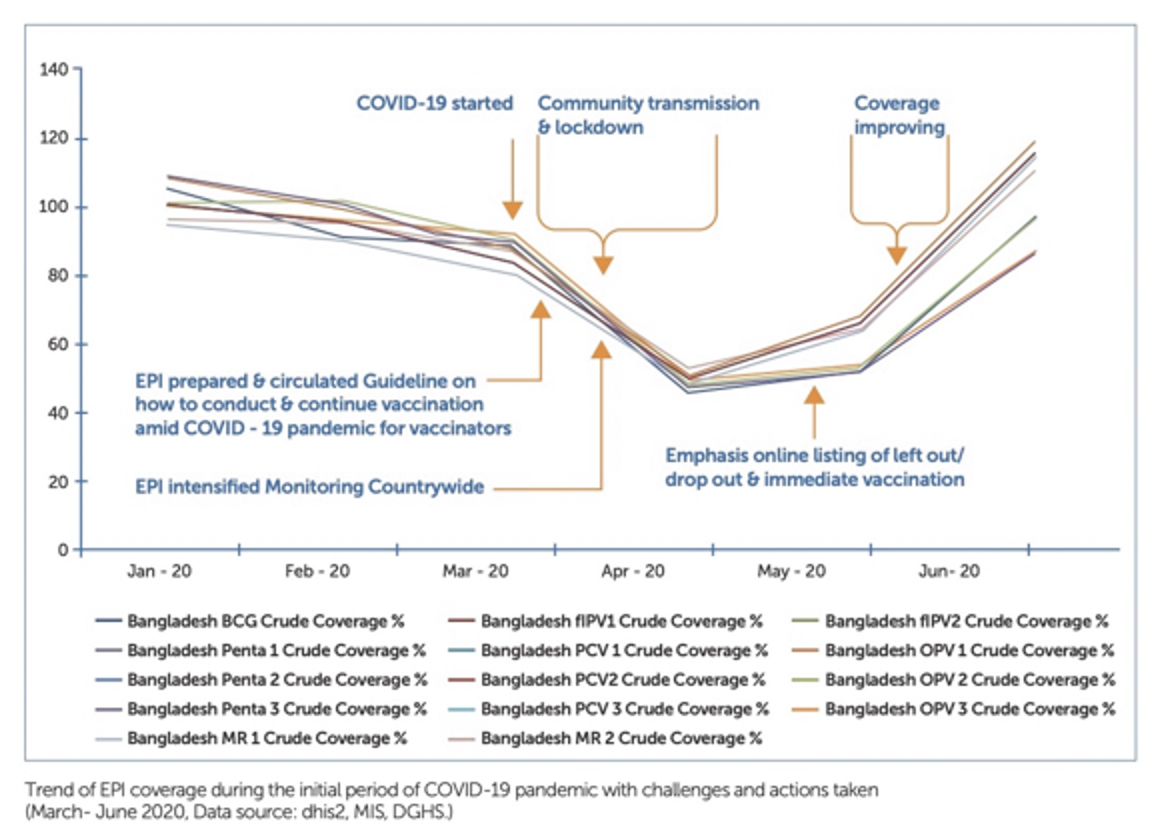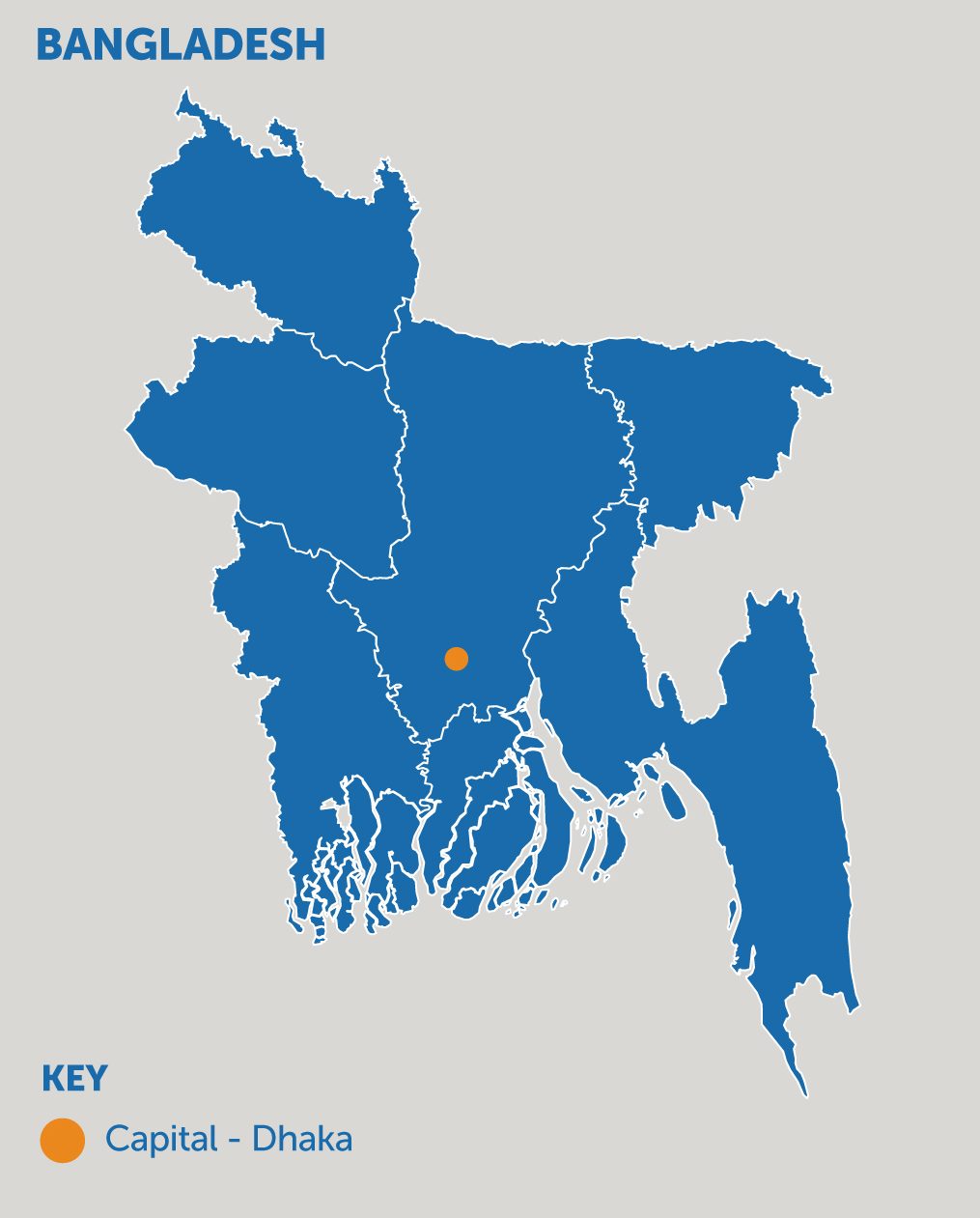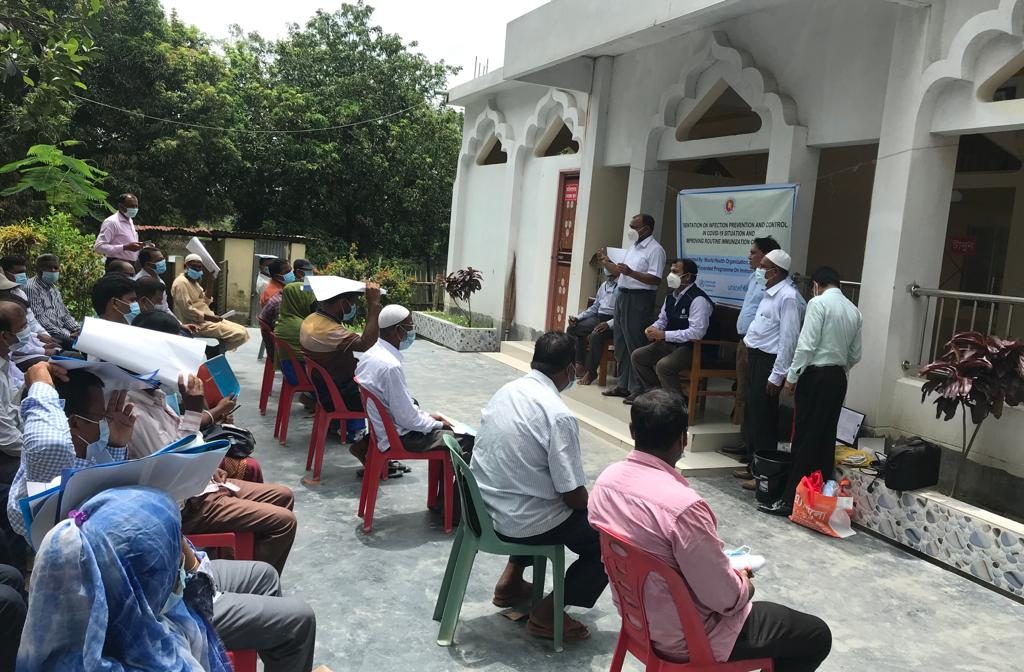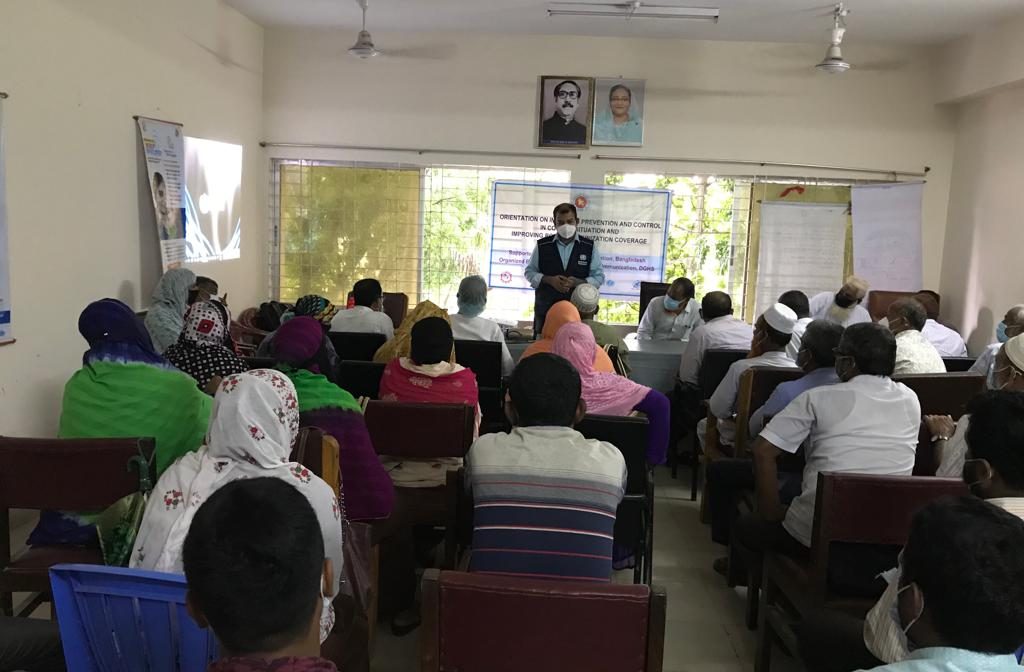Restoring Confidence in Immunization During COVID-19
For several years, outreach immunization sessions in Bangladesh were hosted in the homes of individuals. Vaccinators called Health Assistants would sit in the living rooms or house yards of local community members, including mullahs and other leaders, while caregivers would gather round to listen to the benefits of vaccination over a shared beverage.
This practice was a way of encouraging the uptake of vaccination, particularly in rural areas, by having these services conducted in the homes of influential and respected members of the community. The system was bankrolled by the established trust among people, and for a long time, it worked exceedingly well – until the onset of COVID-19. Years of hard work seemingly went out the window as a nationwide lockdown ensued and people closed off their homes out of fear of contracting the novel coronavirus.
Bangladesh’s national immunization program targets about 3.8 million children per year and vaccine uptake is monitored using the District Health Information Software (DHIS2). The platform not only helps in the planning of immunization services but also enables monitoring of the supply chain to minimize vaccine stockouts. Data recorded on DHIS2 revealed that over 284,000 children missed their pentavalent vaccine in April and May 2020. The alarming dropout rate was flagged within the Expanded Program on Immunization (EPI) in Bangladesh requiring targeted action to increase the EPI coverage to pre-COVID levels. The national EPI team and development partners began investigating how best to address the glaring disruption in the rollout of immunization services. EPI Deputy Program Manager Dr. Tanvir Hossen was part of the team engaged in the negotiations.
Of vital concern was the misinformation and phobia surrounding COVID-19. With the support of UNICEF, the EPI rolled out a communication campaign intended to dispel prevailing myths and misinformation. As part of the National EPI team, Dr. Hossen oversaw the development of two sets of infographics that contained pertinent information about infection prevention and control (IPC): one to guide vaccinators as they provided immunization services, and another to inform the community on what was expected of them during these sessions. However, this was not enough to drive vaccine uptake. Audio-visual content that encouraged caregivers to get their children vaccinated was also developed and broadcast on national television and on the EPI’s social media pages.
Aside from the behavioral change communication campaign, it was also crucial for health workers to receive proper training on IPC. UNICEF and the World Health Organization (WHO) supported the Ministry of Health and Family Welfare (MoHFW) in conducting the crucial training. Protocols that were highlighted included social distancing guidelines, handwashing requirements and the correct way to wear and dispose of face masks given the ongoing pandemic. Twenty-six thousand five hundred vaccinators were trained, either physically or virtually, including health managers in all 495 upazilas (sub-districts).
The National EPI then prepared National Operational Guidelines to direct the health workers as they provided immunization services during this uncertain time. These guidelines covered aspects such as planning and coordination of services, cold chain and logistic requirements, and best practices for vaccine administration and surveillance within the context of COVID-19. The preparation was crucial not only to keep everyone safe but also to rebuild trust with the community, which would, in turn, enable outreach posts to reopen.
The training sessions, communication campaign and national guidelines hit the mark and resulted in increased uptake of immunization services. Data from DHIS2 revealed that the monthly immunization targets of June and July 2020 were not only met, but surpassed, with the number of children vaccinated during this period exceeding pre-COVID levels.

The sustainability and effectiveness of this rapid rollout was tested in December 2020 during Bangladesh’s annual measles-rubella campaign. Initially slated for March 2020, the campaign had been postponed due to COVID-19 restrictions. Thirty-four million children between the ages of nine months and nine years were targeted for immunization, and DHIS2 was an important component in monitoring vaccine uptake. The EPI hosted an online training session to teach health workers how to use the DHIS2 app to prepare micro-plans as well as report and analyze data. The digital training, bolstered with the learnings implemented during the rapid immunization rollout, set the foundation for a successful campaign.
| Final Report of MR Campaign, 2020, Bangladesh - National Level | |||
|---|---|---|---|
| Number of Children | Vaccine Given | Coverage | |
| 9 months to 5 years | 16,094,370 | 16,450,804 | 102% |
| >5 years to <10 years | 19,243,037 | 20,134,887 | 105% |
| Total | 35,337,443 | 36,586,591 | 104% |
Immunization services in Bangladesh have fully been restored as the nation continues to embrace data-driven monitoring and IPC training. The lessons learned after the rise of the pandemic have been crucial in reinforcing trust among caregivers and will be carried forward to sustain demand for vaccination.

Story Submitter
This story was submitted by Dr. Tanvir Hossen, Deputy Program Manager, EPI & Surveillance, Expanded Program on Immunization, Directorate General of Health Services for the Ministry of Health & Family Welfare in Bangladesh. He shares this Bright Spot to share insights on how him and his team continue to work tirelessly to keep their country's immunization system up and running and achieved remarkable coverage after a sharp decline observed in May 2020.





